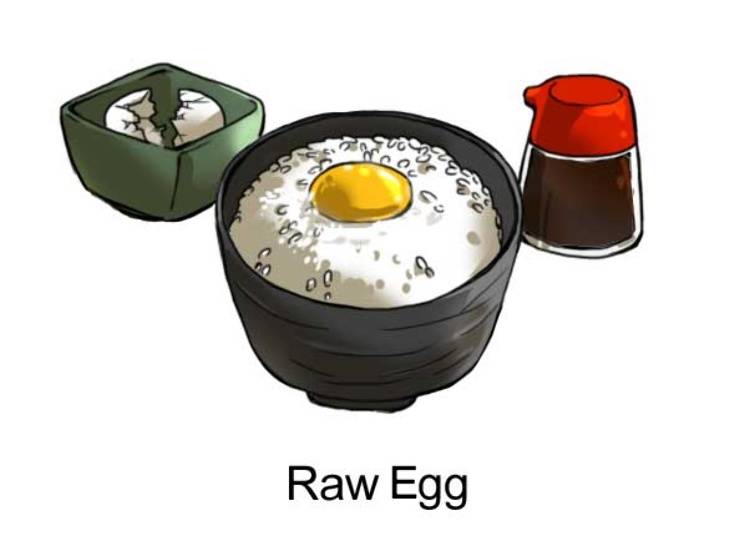
Japanese cuisine is known around the world for its many delicious and attractive-looking dishes, from elegant sushi to casual tonkatsu. But did you know that Japanese have over the centuries nurtured an affinity for different food textures – and occasionally incorporate slimy, sticky, gooey-looking foods? These dishes, known as “neba neba”, may be somewhat lacking in visual appeal, but they make up an essential part of the Japanese diet because of their unique delicious texture and healthful properties.
In Japanese, the word “neba neba” means “sticky” or “slimy”, and is used to describe foods with such a texture. These foods often have a history associated with them: some, like natto and yama-imo (mountain yam) have been enjoyed in Japan for centuries, while others such as okra were introduced in more modern times.
Neba neba dishes are highly popular both as comfort foods and for their many health benefits. In addition to being low-calorie foods, they are high in soluble fiber (the main cause behind their sliminess) and are gentle on the digestive system. They’re also rich in vitamins, minerals, and other nutrients.


From fermented beans to slimy seaweeds, here are the top 6 neba neba foods to try!

Natto (Fermented Soybeans)
Natto is the name for fermented soybeans in Japan. Commonly mixed with yellow mustard and a sweet soy sauce, it’s often eaten straight for breakfast over hot white rice for other meals. It is perhaps one of the more infamous neba neba foods due to its strong odor. Fans of natto swear by it, however, and it is one of the most healthy neba neba foods, containing an enzyme called “nattokinase”, which is said to improve blood circulation and promote heart health. You can try mixing natto with a variety ingredients like wasabi, kimchi, or even avocado, to make it a bit more appetizing if the taste or smell puts you off.

Nameko Mushrooms
While somewhat uncommon in other countries, nameko mushrooms are an everyday variety of mushroom found in Japan. Small in size, nameko have a sticky, gelatinous coating found on the mushroom cap, which is packed with vitamins and minerals. Found in a variety of Japanese dishes, from miso soup to stir-fries, nameko mushrooms have a pleasant, lightly nutty flavor.

Tororo (Grated Naga-Imo/Yama-Imo)
Tororo is a sticky food made from grated yam, either naga-imo or yama-imo (mountain yam), which transforms into a somewhat crunchy slime when grated. Although this alone may not sound particularly appetizing, it’s actually quite delicious when eaten over hot rice with a dab of soy sauce. Japanese yams are rich in protein, vitamins, and minerals and are sometimes called the “medicine of the mountains”. In addition to rice, tororo can also be eaten over udon, soba, or even over sliced raw tuna in a dish called yamakake.

Mekabu and Mozuku Seaweeds
Mekabu and mozuku are varieties of seaweed with a slimy texture that are commonly eaten in Japan. Mekabu—the flowering part of wakame seaweed—has a lightly sweet flavor and is rich in both iron and calcium. Mozuku is a type of seaweed that grows in Okinawa and which contains several essential vitamins and minerals. It has a stringy, fine noodle-like appearance and a mild flavor that goes well with sweet vinegar.

Nama-Tamago (Raw Egg)
Although in some countries raw egg may be seen as a food safety risk, it’s commonly eaten in Japan, and there are strict requirements surrounding egg production. Consuming raw egg provides numerous health benefits, as they are easy to digest and provide an immune system boost—benefits that are lost when the egg is cooked, as the heat alters many of the healthy proteins and fats. Given the rich sweetness of egg yolk, they are used in a number of Japanese dishes. Beaten raw egg is used in a luxurious dipping sauce for thinly-sliced, well-marbled beef during a meal of sukiyaki. Raw egg is also added to a number of dishes, such as Tamago Kake Gohan—a popular breakfast dish—where a beaten egg is poured over a bowl of plain cooked white rice, with soy sauce added to taste. If you fancy trying raw egg, check to make sure that raw egg is safe to consume in your country.

Okra
Okra first arrived in Japan from the United States during the Meiji period in the late 19th century, when Japan opened up to foreign trade. Due to its sticky, slimy texture, okra was quickly embraced as a neba neba food and has become a core ingredient in Japanese cooking, particularly in small appetizers, where it is often topped with smoked bonito flakes. It’s a good source of vitamins, fiber, and folic acid.

Neba Neba Don
Any of the above neba neba foods can be mixed together and set atop a bowl of hot rice to make a Neba Neba Don or on top of soba noodles to make Neba Neba Soba. In Japan these make for popular summertime dishes, as neba neba foods are believed to be helpful at preventing natsubate (summer heat fatigue) due to their nutrient profile. Add a splash of soy sauce and mix well with chopsticks until all of the ingredients combine for a real treat!
For Authentic Insight into Everyday Japanese Cuisine, Try Neba Neba Foods!
Although certain neba neba dishes can be more of an acquired taste, they can be surprisingly delicious as well as extremely healthy, so why not give them a go? It’s recommended to start with more “entry-level” dishes like okra and tororo, and work your way up to rich raw egg or even the pungent natto.
- Category
*Prices and options mentioned are subject to change.
*Unless stated otherwise, all prices include tax.
Popular Tours & Activitiess
Recommended places for you
-
Ad

Walk in the Footsteps of Believers: A 4-Day Pilgrimage Across Goto Islands, Nagasaki Prefecture
by: Yohei Kato
-

A Travel Game Changer! Go Hands-Free Between Tokyo and Kyoto with LUGGAGE EXPRESS by JTB and JR Tokai
by: Guest Contributor
-

Enjoy Japan's Gorgeous Winter Lights! Ride the Romancecar to Shonan no Hoseki Illumination
by: Guest Contributor
-

LaLaport TOKYO-BAY North Building Now Open: Shop, Dine & Enjoy Events at LaLa arena, Just 2 Stops from Disney
by: Wemmy Chau
-

2025 Japan Autumn Color Report: Northeastern Japan Nearing Peak
by: Timothy Sullivan
-

Black Friday 2025: These Are THE Japan Travel & Shopping Deals to Check Out
-

These 18 Things to Do in Hakodate Will Make You Fall in Love With the Northern Wonderland
by: Guest Contributor
-

Canned Food Mania: Taste Testing 5 of Japan’s Most Popular Offerings
by: Matt Vachon
-

What is Matcha? Behind Japan's Traditional Tea
-

We Board Japan's 'Setsugekka' Resort Train And Have An Incredible Journey Through The Heartland
-

We Ordered Food at This Susukino Restaurant in Sapporo, But We Weren't Expecting What Happened Next!
-

3 Tasty Donburi Dishes in Tokyo: Recommendations from a Japanese Food Expert
by: Miyu Shimada
- #best sushi japan
- #what to do in odaiba
- #what to bring to japan
- #new years in tokyo
- #best ramen japan
- #what to buy in ameyoko
- #japanese nail trends
- #things to do japan
- #onsen tattoo friendly tokyo
- #daiso
- #best coffee japan
- #best japanese soft drinks
- #best yakiniku japan
- #japanese fashion culture
- #japanese convenience store snacks


















